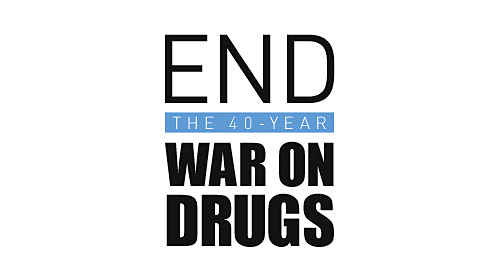
Federal drug laws create a labeling problem. When you hear the term “drug trafficker,” you might think of Pablo Escobar or Walter White, but the reality is that under federal law, drug traffickers include people who buy pseudoephedrine for their methamphetamine dealer; act as middleman in a series of small transactions; or even pick up a suitcase for the wrong friend. Thanks to conspiracy laws, everyone on the totem pole can be subject to the same severe mandatory minimum sentences.
To the men and women who drafted our federal drug laws in 1986, this might come as a surprise. According to Sen. Robert Byrd, cosponsor of the Anti-Drug Abuse Act of 1986, the reason to attach five- and ten-year mandatory sentences to drug trafficking was to punish “the kingpins—the masterminds who are really running these operations”, and the mid-level dealers.
Fast forward twenty-five years. Today, almost everyone convicted of a federal drug crime is convicted of “drug trafficking”, which more often than not results in at least a five- or ten-year mandatory prison sentence. That’s a lot of time in federal prison for many people who are minor parts of drug trade, the vast majority of whom are men and women of color.
This is the system that federal district Judge Mark Bennett sees every day. Judge Bennett sits on the district court in northern Iowa, and he handles a lot of drug cases. “Never could I have imagined,” he writes in a recent piece in The Nation, “that…after nineteen years [as a federal district court judge], I would have sent 1,092 of my fellow citizens to federal prison for mandatory minimum sentences ranging from sixty months to life without the possibility of release. The majority of these women, men and young adults are nonviolent drug addicts.” What about the kingpins? “I can count them on one hand,” he says.
The numbers can’t convey the absurd tragedy of it all. This is how he describes a recent drug trafficking case:
I recently sentenced a group of more than twenty defendants on meth trafficking conspiracy charges. All of them pled guilty. Eighteen were ‘pill smurfers,’ as federal prosecutors put it, meaning their role amounted to regularly buying and delivering cold medicine to meth cookers in exchange for very small, low-grade quantities to feed their severe addictions. Most were unemployed or underemployed. Several were single mothers. They did not sell or directly distribute meth; there were no hoards of cash, guns or countersurveillance equipment. Yet all of them faced mandatory minimum sentences of sixty or 120 months.
We have data to suggest that Judge Bennett’s experience is not uncharacteristic. In 2007, the U.S. Sentencing Commission compiled substantial data on cocaine and crack sentencing. They found that in 2005, the majority of the lowest-level cocaine- and crack-trafficking defendants—men and women described as “street-level dealers”, “couriers/mules”, and “renter/loader/lookout/enabler/users”—received five- or ten-year mandatory prison sentences. This is especially true for crack-cocaine defendants, most of whom are black; despite the Fair Sentencing Act of 2010, selling a small quantity of crack cocaine (28 grams) carries the same mandatory minimum sentence—five years—as selling 500 grams of powder cocaine.
This is the reality for which proponents of severe federal drug laws must account. We cannot pretend that heavy sentences for women like Kemba Smith and men like Jamel Dossie are the fluke mistakes of overbroad laws. We must admit that our sentencing of minor players in the drug trade to prison terms meant for the leaders of large drug organizations—as a common occurrence, not as an exception. As a result, we needlessly imprison lots of minor offenders for long periods. Judge Bennett decries the human costs of these sentences:
If lengthy mandatory minimum sentences for nonviolent drug addicts actually worked, one might be able to rationalize them. But there is no evidence that they do. I have seen how they leave hundreds of thousands of young children parentless and thousands of aging, infirm and dying parents childless. They destroy families and mightily fuel the cycle of poverty and addiction.
Here, again, we have evidence that Judge Bennett is right: long mandatory sentences are unnecessary for most drug offenders. In 2002 and 2003, Michigan and New York repealed mandatory sentences for drug offenders and gave judges the power to impose shorter sentences, probation, or drug treatment. The sky didn’t fall, but crime rates did. So did prison costs.
For decades, Judge Bennett has seen a system that doesn’t make sense. He has seen mandatory laws written for the most serious, large-scale drug dealers applied to the men and women on the lowest rungs of the drug trade, and he has seen it happen a lot. We once imagined that severe mandatory sentences would be used to deal with the leaders of large drug operations. It’s time our federal drug laws were fit to the people that they really target.
Judge Bennett was also featured along with other criminal justice experts in Melissa Harris-Perry’s recent segment on mandatory minimums, which you can see here.
Learn more about sentencing reform: Sign up for breaking news alerts,follow us on Twitter, and like us on Facebook.
